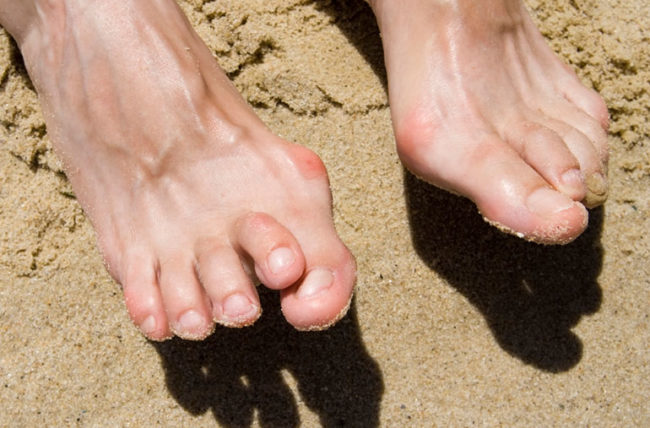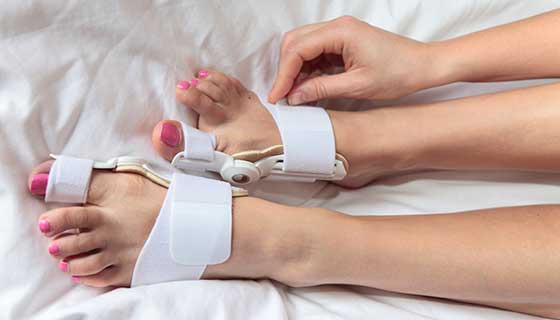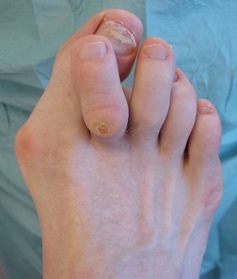Eshealthtips.com – If you’ve noticed that your toes are crooked or turned inward, you may have a foot or toe deformity. Depending on the severity of the deformity, these conditions may lead to pain, thick skin, calluses, and even pressure sores. They may also cause other issues including a misaligned foot or difficulty fitting shoes. Because foot and toe deformities are progressive, they’ll only get worse over time. However, with early diagnosis and treatment, you can get back to living a pain-free life.
Designing the Best Treatment Plan for Specific Needs
Treatment for foot and toe deformities is available. Depending on the severity of the deformity, surgical or conservative treatments are available. Our doctors work closely with each patient to devise a treatment plan that will be best for their specific needs. Whether the deformity is mild or severe, our experienced foot and toe doctors will ensure you live a pain-free life. By taking care of your deformity early on, you can improve your quality of life and feel more confident in your appearance.
Hammer toes are another common foot and toe deformity. The middle joint of your toe curls upward and inward, similar to a hammer. Typically, your second toe is affected. High heels and narrow toe boxes cause hammertoe. If left untreated, it can cause pain and develop corns. In addition, hammertoes may be accompanied by a bunion, a bony growth on the base of your big toe. In severe cases, surgery may be necessary.

The most common causes of foot and toe deformities are genetic and inherited. High-arched feet, for example, result in an unusually high arch and high instep. Patients with this type of foot cannot walk on the ball of their foot or roll their foot in a heel-to-toe motion. In addition to the above-mentioned foot problems, high-arched feet can cause other foot and toe deformities, including the onset of claw toes and high arches.
Orthopedic Surgery Can Treat Most Toe Deformities
Orthopedic surgery can treat most toe deformities. Depending on the severity of your deformity, your doctor may recommend conservative treatment measures in order to restore your walking ability and delay progression. Conservative treatments can include using specialized shoes that are enlarged toe boxes to keep your toes from rubbing against each other. You may also need to avoid high heels, narrow shoes, and tight footwear. Surgical treatment may be recommended if conservative treatments fail to give you relief from the pain.
Acute treatment for foot and toe deformities can include wearing special shoes with soft toe boxes, performing toe exercises, and taking prescription medicines. Claw toe therapy, however, can be a very effective method of treating the deformity and correcting it. If left untreated, claw toe may even lead to painful calluses on the top of the toe or under the ball of the foot.

A physical examination and/or X-rays may be necessary in order to diagnose a foot or toe deformity. This may be a condition inherited or acquired. Often, toe deformities are associated with bunions, high arches, and people who rotate their feet inward. If you suspect that you have a foot deformity, the best course of action is to seek medical treatment immediately.
Treatments for Curly Toe Deformities may Vary
Treatment for curly toe deformities can vary, ranging from non-surgical treatments to surgical ones. Non-surgical treatments include use of special medical shoes and pressure-relieving insoles. Surgical correction is another option, and may involve the use of pins to hold the toe in place. This procedure is typically performed at an early age, but the patient should be aware of any limitations in their flexibility before the procedure.
Splayfoot is another common condition affecting the foot. The metatarsal bones spread out in this disorder, creating increased pressure on the middle bones of the forefoot. A splayed foot may lead to calluses or an enlarged big toe. Another painful deformity is hallux rigidus, where the big toe is stiff and the joint becomes arthritic. This condition can lead to pain and a bump on the top of the toe.

A problem-focused physical examination can assess the extent of your digital deformity and determine the best treatment options. The majority of foot and toe deformities are treatable nonsurgically. You may be able to wear shoes with lower heels, or purchase orthotic spacers or splints. A bunion splint or gel orthotic may also be effective. If your bunion or hammertoe is more severe, a surgical procedure may be needed.
Reference: